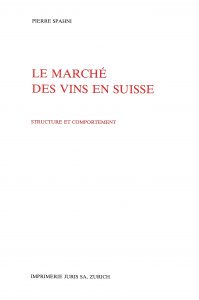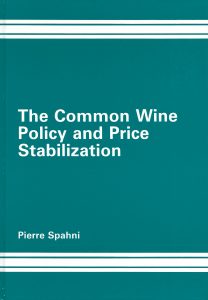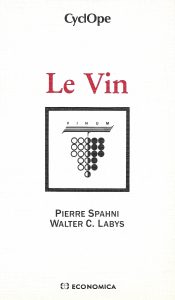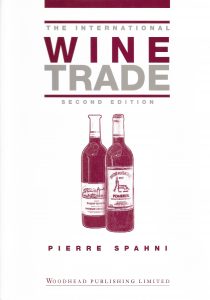FREE REIN
FRED’S AND THEO’S LOGICAL VIEWS ON RISK
Risk was a hot topic for Swiss wine brokers Fred and Theo during the sixties. The extent to which prices could change after each harvest, despite a concerted effort to contain them with a stabilisation agreement, seemed to surprise them every time. Price instability lay at the heart of Fred’s and Theo’s daily attempts to bring their clients – producers and negociants – to review their price expectations in order to agree a deal. The two brokers felt that stable prices were in everyone’s interest but that it was the wine buyers who were generally more averse to risk and thus keener to see price variability reduced.
These recurrent discussions on the (ir)rationality of wine price adjustments and on the desirability-but-impracticability of price stabilisation took place in the office which my granduncle and my father shared below our flat. I used to spend a lot of time there as a teenager. The conversations gave me an insight into what price variability – risk – meant in practice. The numerous records they kept of wine prices, harvest size, even weather-related events, infused me with a natural feel for numbers. I have fond recollections of the wine brokerage business back in those years, and particularly of the yearly visits paid by a few major clients from Zürich whom Fred would regularly arm-twist into rewarding me with pocket money for good school marks. One of them was Ueli Prager, founder of Mövenpick, pioneer of standardised gastronomy and a key ally to Robert Mondavi.
Fred dearly wished that I take up the family business but I was quite determined to tread my own way, off the beaten tracks. So, barring casual jobs in wineries, wine remained safely at the periphery of my interests. It all changed when I attended a lecture which Walt had been invited to give on his preliminary model of the international wine market at the University of Lausanne where I was studying Business and Law. Dazzling. From the room I emerged with the firm conviction that economic models could solve Fred and Theo’s perennial quest for more stable prices, and decided soon after to drop Law after the second year, to write a doctoral dissertation in Business, which would attempt to model the Swiss wine market.
A RANDOM WALK DOWN WALT’S STREET
Walt’s models reflected his background in electrical engineering. He had earned his Ph.D. in economics under Clive Granger’s supervision and published a book on commodity modelling which truly fascinated me with its scope and simplicity. I had taken an electricity class at grammar school where we had applied the rules of symbolic logic taught in a course on philosophy. At the business school in Lausanne, Blaise was introducing me to operations research and system theory. He had written a doctoral thesis in mathematical logic under Joseph Bochenski’s direction, had worked his way up at Nestlé but fallen out with its new CEO and was now generously spending time chatting about my project.
Blaise and Walt ended up supervising my dissertation which offered a comprehensive analysis of the legal and economic underpinnings of Switzerland’s wine market and policy. Le marché des vins en Suisse: structure et comportement [The Wine Market in Switzerland: Structure and Behaviour] (1978) proposed to stabilise domestic wine prices with the help of an early-warning system of supply shocks and better management of import quotas. It was the first publication on the Swiss wine market and became popular as such. Whilst I was writing it, a ‘wine war’ was raging in the South of France, which really set the stage for my next book – on Europe’s common market for wine.
A TRIBUTE TO TERRY CHARDONNAY
In Davis, an enlightening moment happened by The Village’s swimming pool – the apartment complex in which I lived, on the edge of the city. Handsome, happy-go-lucky Terry was basking in the sunshine with two friends and a jug of wine. She was a young nurse with a wonderfully free mind and a fake identity card she would use to gain access to bars (21 being the legal drinking age). I knew one of the girls and they kindly proposed that I join in. Joints were rolled and wine was poured unceremoniously into plastic cups. ‘It’s only a Gallo wine’ said Terry with twinkling eyes, ‘but it does the job’.
The way in which Terry and her friends perceived wine was at variance with the old-fashioned image prevailing in Europe where, barring aperitifs, it was still mostly viewed as a meal accompaniment. In California wine was a fun and easy drink that could well be enjoyed on its own at any time. I liked the way Americans freely experimented with wine and their wish to design the drink from the consumer’s end, giving them what they really wished for, from convenient packaging to interesting colours and tastes, whilst adding some fizz along the way. The ‘white zins’ and ‘coolers’ the Californians produced were all part of a refreshingly novel, much needed approach to making wine – and marketing it.
There were other amiable, like-minded Terries in the world, as I discovered when I moved to the north-east of England. A dash more upmarket, many of them liked to gather at the newly-opened Laser Wine Bar, at the bottom of Newcastle’s Grey Street, to sip a few glasses of lambrusco, champagne or chardonnay. It was this new wave of drinkers in a traditionally beer-gulping Britain who would come to rescue European wine producers busier fighting each other than innovating. Getting drinkers in the north to solve problems raging in the south of Europe was Jacques’ great hope. He was the man sitting in Brussels, trying to devise sensible rules for Europe’s common market in wine.
UNION JACQUES
Jacques had a seemingly intractable problem in that he had to deal with just too many ‘single’, or ‘common’ European prices: a guide price and an intervention price, plus an average market price for red and white table wine, in France, Italy and Germany. Like Fred and Theo, Jacques wished that transactions occurred at prices close to the agreed target levels, but they were moving away from each other in spite of him applying a raft of measures, including some sort of buffer stock programme called ‘private storage aid’. He then resorted to enforcing common prices by pushing them up, sending ‘excess’ wines to distillation wherever market prices dipped below intervention prices. This only led countries to produce more mediocre wine however, and there were just too few Terries in the north willing to drink the swelling surplus in the south. Jacques dragged Britain and a few other union members before the courts, to confront them with their duties (they kept favouring their domestic production of beer), but when the prospect of having three more wine producers joining the party became reality, Europe’s wine policy went into a tailspin and had to be fitted with budget stabilisers.
Jacques was an affable and open man who offered precious comments on the first draft of my dissertation at Newcastle University. He did like my idea of presenting (particularly older) producers with an offer to exit the market that was so generous that they could not refuse it, and applied it. Brussels did not find the political courage to scrap price support (distillation) though, which I regarded as an essential step in any attempt to balance the market. Jacques retired shortly after enacting new regulations paving the way for Europe’s next enlargement. The half-baked reform of 1988 predictably failed to restore market equilibrium and his team was left to paddle aimlessly on a wine lake for nearly two decades, until agriculture was no longer able to eschew global efforts to liberalise world trade and the European Commission was forced to get a grip of the rudder.
The inadequacy of heavy-handed market intervention for stabilisation purposes (distillation has a perverse effect on prices and incomes) called for taking a brand new look at ways of achieving this key objective of European wine policy. The solution I arrived at was simple: trading in proper futures contracts for wine, that extend through the next harvest at all times, would inevitably stabilise prices and incomes to those who want it (not everyone does, as some clearly prefer to speculate). The real difficulty lay on the practical side, in designing contracts that could be effectively used by the wine trade whilst eliciting enough interest from investors to create a viable market. The suggestion that Brussels scrap its market intervention arsenal and embrace futures in due course lay at the heart of my 1986 Ph. D. dissertation and ensuing book The Common Wine Policy and Price Stabilization, published in 1988, which Walt kindly prefaced.
Many were horrified at the very thought of attracting investors to create a market where wine professionals could hedge their risk as they pleased. They dismissed the proposal for fear of creating a market in standard blended European wines. But a few academics and wine professionals were open-minded enough to see it in less simplistic terms and gave the idea a serious try. Thirteen years later, two months before acquiring LIFFE, the pan-European stock exchange Euronext would take the leap and launch proper futures contracts for a selected basket of top wines from Bordeaux. Fierce opposition by a large section of the Bordeaux wine trade and widespread gloom amongst investors would lead to a suspension of trading in WineFex contracts at the end of the trial period. Still, the idea of wine futures refuses to die and keeps seducing young creative minds to this day. Time can be on your side.
ROBERT’S PIERRE
Time can heal too. The radical ideas put forward in The Common Wine Policy did not earn me too many friends or favours in the established circle of the former Office International de la Vigne et du Vin (OIV), the Paris-based intergovernmental body on wine, which cold-shouldered them together with the book. Robert, its director, chided me for writing in English and one of its organisations snatched the plan for a first economic conference on wine, which I had outlined with Walt and come to present to them for patronage. A French publisher offered us an opportunity for riposte a year later, with a proposal to write a pocket book on wine for a new economic series. A temporary Tokyo residency, away from my usual abode in Edinburgh, helped me take the widest possible angle for this first book on the world wine market.
Le Vin [Wine] (1992) uncovered the pre-eminence of bottles over bulk in international trade. It showed that the pattern of exchanges was gradually shifting away from Western Europe and that globalisation was in the offing, owing to the growing use of wine brands by international companies (the deregulation of finance in the late 1980s had caused a frenzy of mergers and acquisitions, mainly around spirits which lent themselves easily to global branding). The perceived conflict between two key wine attributes – brands and geographical indications – was also resolved: the latter very often supported the former.
Bryce Rankine’s enthusiastic reception of the book may have helped to put the notion of ‘wine attributes’ on marketing peoples’ radar screens as early as 1992 (‘you are a marketing man!’). Attributes are a useful concept that allows us to explain why, in economics, wine behaves differently from most other agricultural commodities (it is a highly differentiated product) and how, in marketing, product differences can be exploited to develop a sustainable competitive advantage (by offering something unique to consumers – or perceived as such).
The high degree of differentiation imparted to wine by its own characteristics (attributes) is a fascinating issue that I had encountered in the mid-seventies. The publication on the Swiss wine market had dealt with it in a fairly rudimentary way. A decade later the book on the Common Wine Policy had delved again into that topic and referred to the outstanding work done on French wine consumption by Daniel Boulet and his colleagues at INRA in Montpellier. Le Vin just took up that theme and brought wine attributes to the fore. These were developed a good deal further in the following book, on The International Wine Trade (1995), which touched on the related issue of segmentation – the dividing of consumers into groups which can be addressed with the same marketing mix or message. ‘Benefit segmentation’ looked quite promising in that respect.
TERRY’S CHARDONNAY’S ATTRIBUTES
The benefits derived from Terry’s ‘Gallo wine’ by the swimming pool in Davis for instance, were not quite the same as those imparted by the French bottle which my publisher ordered when he invited me for lunch in Cambridge. The needs and aspirations of two different segments (I was in both groups but not quite in the same mood) were addressed by two distinctive sets of wine attributes.
The geographical origin and the variety of the grapes used in the production of a wine, its colour, alcoholic strength, type of container, packaging, brand name and price are a wine’s likely key attributes. Firms use them together with other cues on quality and taste in their marketing mix, in order to differentiate their offerings from those of their competitors. In short: wine is a multi-dimensional product; segments can be drawn up in that space and attributes adjusted to move a wine into the ‘right’ position.
Innovative work linking wine attributes with drinking occasions and moods, and with consumer profiles (like the cheerful ‘Chardonnay Girl’ born out of Waverley’s novel segmentation of the British market in 2001), showed how much attributes had resonated with wine marketing people. Bridging the gap between various disciplines, as well as between academics and practitioners, was a prime objective in my writings.
The book on the international wine trade was conceived in that vein. It aimed to cover all economic issues affecting wine without ever using maths or jargon, just the compelling narrative on the rise in global trade and its shift from the old to the new world. After returning to Edinburgh in 1992, I had decided to focus on trade because it was one of the few bright spots in the gloomy wine economy: global production and consumption were in steep decline but trade was faring much better and conditions could only improve since GATT was wrenching agriculture into its fold. Geneva was set to be featured in every world atlas of wine – for quietly dismantling trade-protecting walls.

The United Nations’ Commodity Trade Statistics (Comtrade) Database may now look like the definitive reference on international commerce, yet taking it as the prime source of trade statistics for my book in the early 1990s was a bold move and a huge task (some countries even had to be asked to correct their series). But the effort paid off and, better still, the clouds hanging over the wine economy began to dissipate. By the time the book was published, US consumption was rising again (courtesy of a French Paradox), Brits were eagerly swapping their warm pints of beer for cooler glasses of chardonnay, and trade was beginning to soar.
MIND HUGH
The International Wine Trade went down well, thanks largely to Hugh’s kind foreword and endorsement. Receiving an award from the OIV was helpful too. The organisation finally yielded to the new order and English became one of its official languages. Wily Adelaide called me down in 1999 to help kick-start her global aspirations in wine and witty Gideon rang me up for a Christmas present – The Economist‘s survey of the world wine industry. The book on trade got a new lease of life with a second edition in 2000, plus a wee web companion – the informal www.span-e.com which I set up from scratch with some inexpensive software. I kept the website simple and free, so that it could be accessed by anyone with basic equipment, and now even smart phones.
A neat platform was offered to me when Tim and Neil asked me to pen a monthly column on EU affairs in Harpers Wine & Spirits Weekly, a venerable magazine which then stood at the apex of wine publishing. To be entrusted with a full page aimed at seasoned British wine professionals was quite rewarding for me. Not having English as my mother tongue made it even more gratifying. Readers enjoyed it and Tim was pleased, but I had to pull the plug on it in mid-2001, after just six months. It was not sustainable financially. I was tired of running after the truth and having to pay for it.
CHRIS CROSSING
My last column (‘Treading a fine line‘) railed against dishonest analysts. ‘Black is White’ was my comfort – a song about someone who would just ‘say what he means and mean what he says’. It had been written by my pals in Newcastle in the early 1980s. At that time I had the added privilege to meet both Chris, a gifted and sincere musician who would later rage against selling himself on ‘the road to hell’, and Jim, his manager as well as that of Queen, who had agreed to let me use the recording studio’s office address and secretary for running Weinpool (a practical offshoot of my Swiss dissertation, which enjoyed the backing of the Swiss administration but was killed in the nest by a few firms fearing greater market transparency). The contrast between the openness of one world and the pettiness of the other was really striking.
Tim and Neil did manage to turn my collaboration with Harpers into a truly enjoyable experience though. They asked me to cover Euronext’s memorable launch presentation of its wine futures in London on September 11th, 2001. Another hopeful project blew up soon after that: a new book had been agreed with a key publisher, which I had to forsake when it became clear that I could never recoup my investment. Dispirited, I turned away from wine, then decided to go back to it in 2003, and discovered that the Chinese had translated the book on international trade. Jancis asked me to write the first entry on ‘economics’ in her Oxford Companion to Wine and then another one on ‘globalisation’. I published a few more pieces on my website, mostly to keep the pressure on Brussels to reform its wine policy and balance its market in line with my original proposal. The European Commission eventually drew a plan scrapping distillation whilst making producers a generous offer to grub up their vines. It also put forward a few major changes in winemaking and marketing. After customary dithering and dilution, the reform was agreed by the Council of Ministers at a stormy session on December 24th, 2007. All is well …
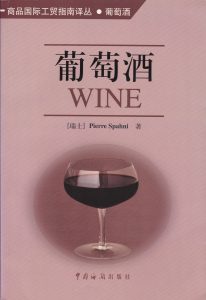
Walt’s street led me into uncharted territory. Powder skiing had taught me the fine art of taking risks but the continuing uncertainty made it often difficult for me to find and maintain the best line. What kept me going were the truly exceptional moments I could spend with people as wonderful as Bryce Rankine – an outstanding figure in the world of wine for his kindness and modesty – and in places as magical as Verbier, where I have wrapped up all my books. Above it, a watercourse (bisse) was built five centuries ago in order to bring the precious commodity from Chardonnay, up on the alp, to a distant village. It now ends abruptly, halfway through its intended course, on a cliff, in a steep waterfall. A sign invites you to gaze at raw nature crumbling down slowly on the one side and at the resort developing fast on the other. It also prods you into musing on the ‘old world – new world’ theme. Mind the gap… . When my quest of novelty made me veer off ‘the road to predictability’, in the seventies, I knew that I could find myself treading for ever a steep path to uncertainty. It was well worth taking that risk.
December 10th, 2009
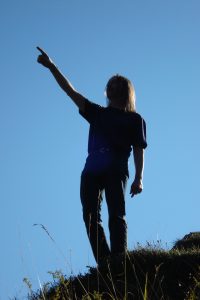
THE CAST
in order of appearance
position prevailing at the time
Fred: Alfred Kramer, my dear and childless grand-uncle, distinguished wine taster and wine broker, originally from Gräslikon (Zürich).
Theo: Theo Spahni, my beloved father, partner and heir to Fred, had moved from Bern as a teenager to live and work with his uncle who ran an independent wine brokerage office in Sion (Valais).
Walt: Walter C. Labys, professor of economics at West-Virginia University in Morgantown (USA) and visiting scholar at the Graduate Institute of International Studies (HEI) in Geneva. Wine connoisseur.
Blaise: Blas F. Lara, all-round genius, professor of operations research and system theory at the Ecole des Hautes Etudes Commerciales (HEC), University of Lausanne.
Terry: Theresa (I caught her fancy but never her full name), nymph from nearby Woodland in California.
Jacques: Jacques Gourdon, head of Wines and Spirits at the European Commission in Brussels.
Robert: Robert Tinlot, director of the Office (Organisation) International(e) de la Vigne et du Vin, in Paris.
Hugh: Hugh Johnson.
Gideon: Gideon Rachman, of The Economist in London.
Tim: Tim Atkin, editor of Harpers Wines & Spirits Weekly in London.
Neil: Neil Beckett, feature writer at Harpers Wines & Spirits Weekly in London.
Chris: Chris Rea, musician from Middlesbrough, recording at Mountain Studios in Montreux.
Jim: Jim Beach, manager of Chris Rea and of the rock group Queen who owned Mountain Studios.
Jancis: Jancis Robinson, wine writer and editor of the Oxford Companion to Wine.
Many thanks to Olivia at Verbier/Bagnes Tourisme, for going the extra mile in tracking the origins of Verbier’s distinctive ‘Chardonnay’.
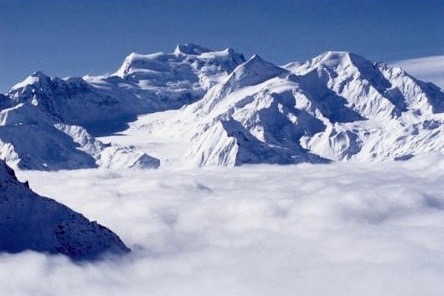
***
ABBREVIATIONS
GATT: General Agreement on Tariffs and Trade.
INRA: Institut National de la Recherche Agronomique.
LIFFE: London International Financial Futures Exchange.
WTO: World Trade Organisation.
***
© 2009 pierre spahni / www.span-e.com
You may quote or disseminate this article provided you make full reference to its author and website
